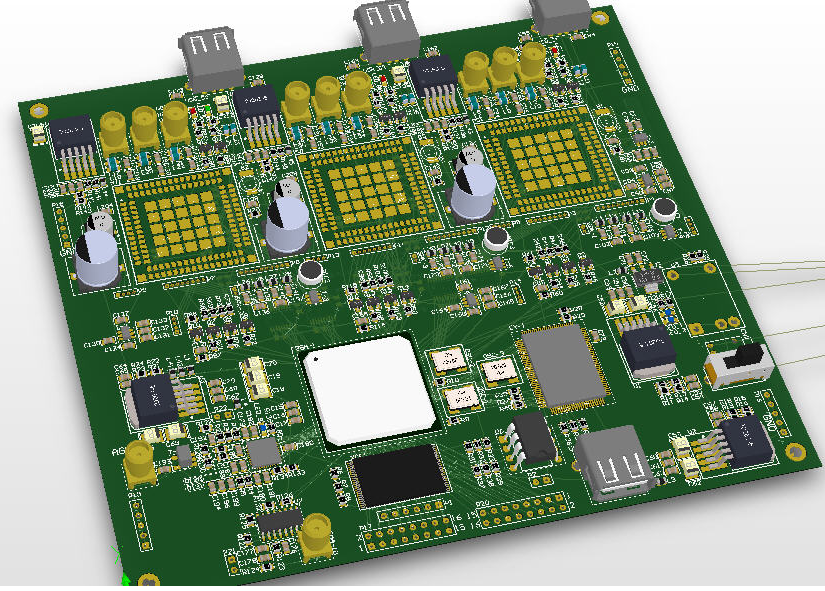Gallium nitride technology plays an important role in 5G applications below 6GHz and can help achieve many goals including higher data rates.
It is estimated that by 2021, the number of people with mobile phones (5.5 billion) will exceed the number of water users (5.3 billion). Bandwidth-consuming video will further increase the demand for mobile networks, accounting for 78% of mobile communication traffic. 1 5G networks using massive multiple input and multiple output (MIMO) technology will become the key to supporting this growth. According to Strategy Analytics forecasts, by 2023, 5G mobile connections are expected to grow from 5 million in 2019 to nearly 577 million. 2
MIMO basics
Each generation of wireless technology uses advances in antenna technology to increase network speed. 3G uses single-user MIMO, which uses multiple simultaneous data streams to transmit data from the base station to a single user. The 4G system mainly adopts multi-user MIMO technology, which allocates different data streams to different users, and provides much better capacity and performance than 3G. 5G will introduce massive MIMO to further increase capacity and provide data rates up to 20Gb/s.
5G massive MIMO description
5G claims to be able to increase network capacity and data rate while reducing operating expenses as much as possible. Users also hope that the quality of wireless data services can reach the wired level.
5G massive MIMO can help operators achieve these goals. It will provide high data rates for many users and help increase capacity. It does not require additional spectrum to support real-time multimedia services. In addition, massive MIMO utilizes beamforming (a technology that aggregates signals from multiple antennas into a single strong beam) to send signals directionally to a single user, thereby reducing energy consumption.

Advantages of spatial multiplexing and massive MIMO
Massive MIMO technology uses a large antenna array (generally composed of 64 dual-polarized array components, at least 16) to achieve spatial multiplexing. Spatial multiplexing provides multiple parallel data streams in the same resource module. By expanding the total number of virtual channels, it can increase capacity and data rate without adding additional towers and spectrum.
In spatial multiplexing, each spatial channel carries independent information. If the dispersion in the propagation environment is rich enough, many independent sub-channels will be generated in the same allocated bandwidth, so that multiplexing gains can be achieved without additional bandwidth or power costs. Multiplexing gain also refers to the degree of freedom of the signal spatial distribution; in a massive MIMO configuration, the degree of freedom controls the overall capacity of the system.
After adopting massive MIMO, multiple antennas concentrate the transmission and reception signals into a small space area, thereby greatly improving throughput and energy efficiency. The more data streams and the higher the data rate, the more efficient the use of radiated power. This method also improves the reliability of the link. The increase in antennas means a higher degree of freedom in space diversity. It can improve the selectivity of transmitting and receiving data streams, and enhance the ability to eliminate interference.
Massive MIMO provides several advantages, including:
• Prevent propagation in unnecessary directions and reduce interference
• Reduce latency, obtain faster speed and higher reliability
• Reduce attenuation and drop, improve signal-to-noise ratio (SNR)
• Improve spectrum efficiency and reliability
• Higher energy efficiency
5G massive MIMO and deployment below 6GHz
Obviously, to achieve the 5G 20Gb/s data rate target, millimeter wave spectrum is needed. However, before millimeter waves can be used in mobile communications, several key challenges must be resolved.
Although operators and original equipment manufacturers continue to work hard to improve millimeter wave technology, in the short term, frequencies below 6GHz will be the first choice for 5G network technology. The frequency below 6GHz is suitable for both rural and urban areas, because the technology supports long-distance high-speed data transmission (Figure 3). Operators initially intend to deploy 5G in the frequency ranges of 3,300 to 4,200 MHz and 4,400 to 5,000 MHz, which support channel bandwidths of up to 100 MHz.
Massive MIMO below 6GHz solves the interference problem by using a large number of antennas in the base station, enabling the base station to provide services to a large number of users in urban areas. Massive MIMO can also improve peak, average, and edge throughput, and maximize cost efficiency by achieving the best balance between user coverage and capacity.
If there were no system design challenges, these technological advancements would not have occurred. Massive MIMO beamforming technology below 6GHz will promote the use of small-sized, high-performance, cost-effective power amplifiers (PA) in massive MIMO arrays. In addition, because 5G modulation mechanisms are becoming more and more complex (such as 256-QAM), wireless infrastructure PAs need to be very efficient under deep power output backoff conditions (up to or more than 8dB) to achieve the required linearity.